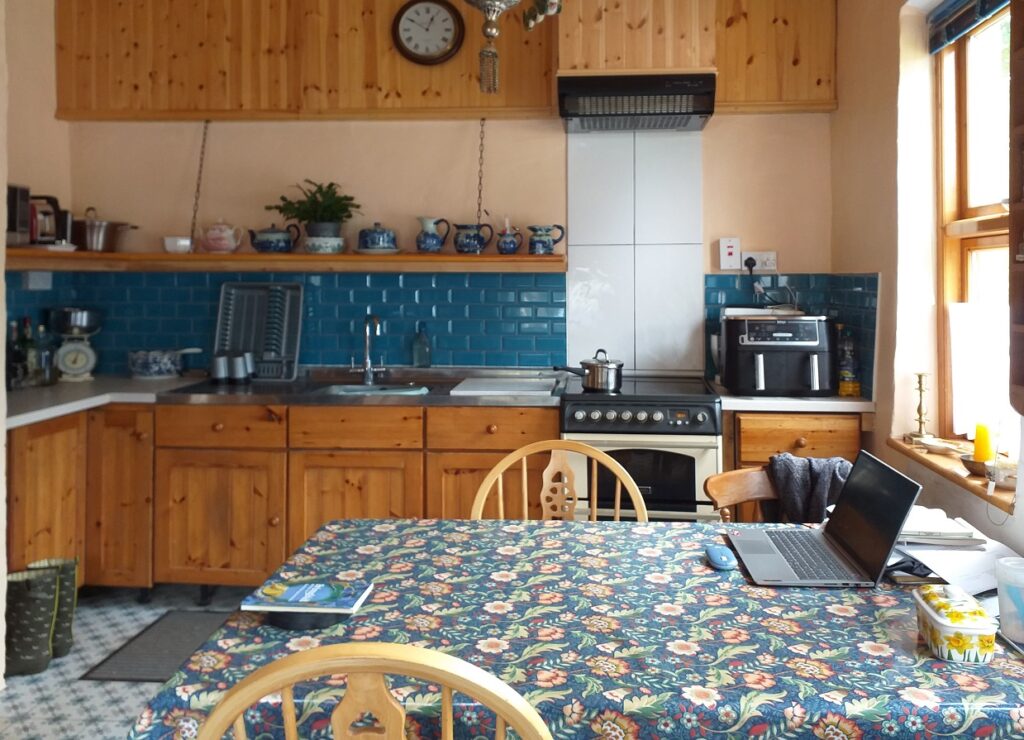A quick recap: we bought our Irish Wreck some ten years ago now, and at the point this photograph was taken, we were still living in a bus on site, while drains and a septic tank were being dug. Our water supply was the tap to the right of the makeshift sink unit, the water being pumped from a well up the road. This was my kitchen for nearly a year. I have recollections of standing out in torrential rain, washing up... We also used this facility to wash ourselves – cold water only!

Inside the house, there was just one electricity point and one ceiling lamp in the main room. We were lucky to have those, many wrecks were never linked to the grid, but this farmhouse was once linked to a small milking parlour, which was destroyed when a tree fell on it in a storm, many years ago.
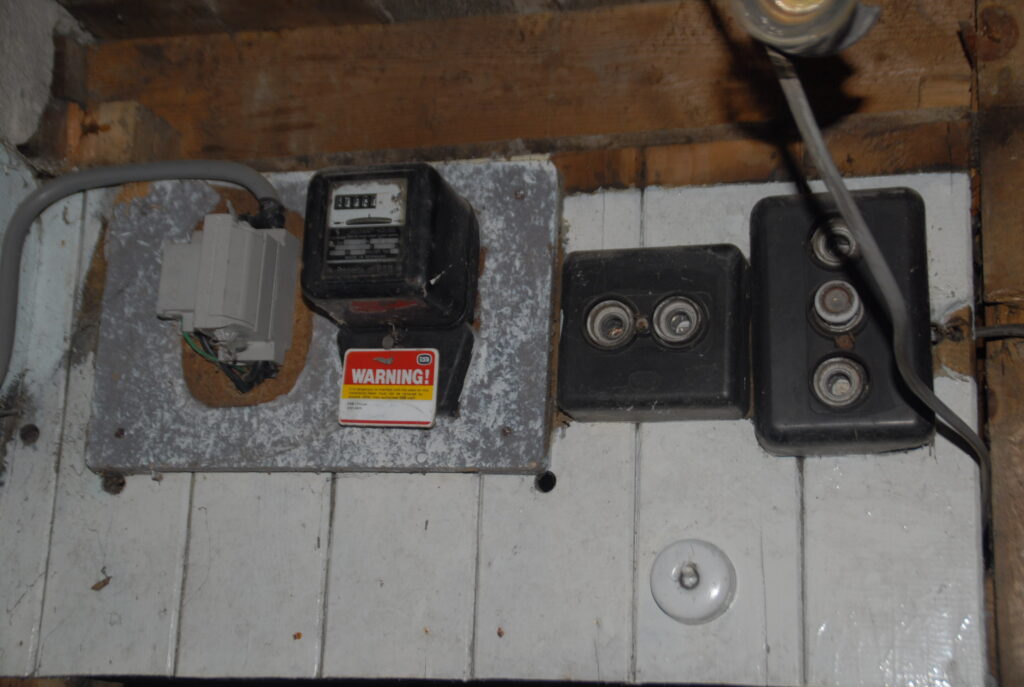
All the windows needed replacing, which is detailed on another storyboard. This room, the larger of the two downstairs rooms, is destined to be the kitchen. As you can see, the room was uninhabitable at this time, but we were still using it.


The south wall, nearest to the road, which receives the brunt of weather from the Atlantic, was damp through. We lined the chimney with ceramic pipes, and removed all the damp plaster, but it will be some years before the outside wall can be sealed, allowing the stone-and-earth construction to fully dry out.

Once the external drainage system was working we were able to bring the ‘kitchen’ indoors. We are still using the gas ‘camping kitchen’ at this time, the white unit against the ‘wet’ wall.
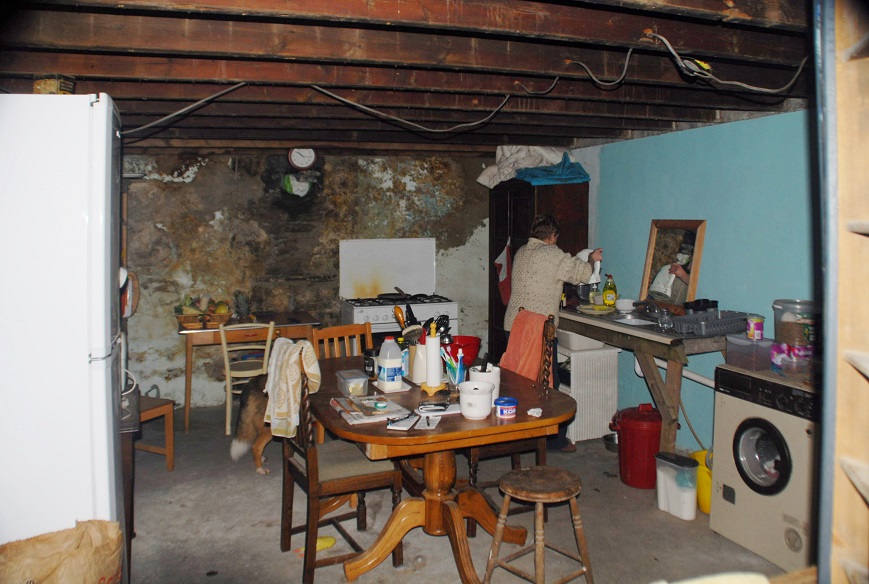
The main beams to the second storey were mostly sound, but we fitted an extra one to take the weight of the bookcase in what would be the study, above it, and bolted a second one to the beam next to the waterlogged wall. We staggered ‘noggins’ between the beams to stabilise the old timber. During this time, we bought an electrical service board (just visible in the under stairs cupboard, and began to put wiring through the building. Eventually ‘Electric Ireland’ replaced this old unit with a modern one which can be read remotely, making it easier for them to send their increasingly inflated invoices.

Eventually the under stairs cupboard and the electrical service board were boxed-in, utilising one of the old bedroom doors which was cut down and sanded.
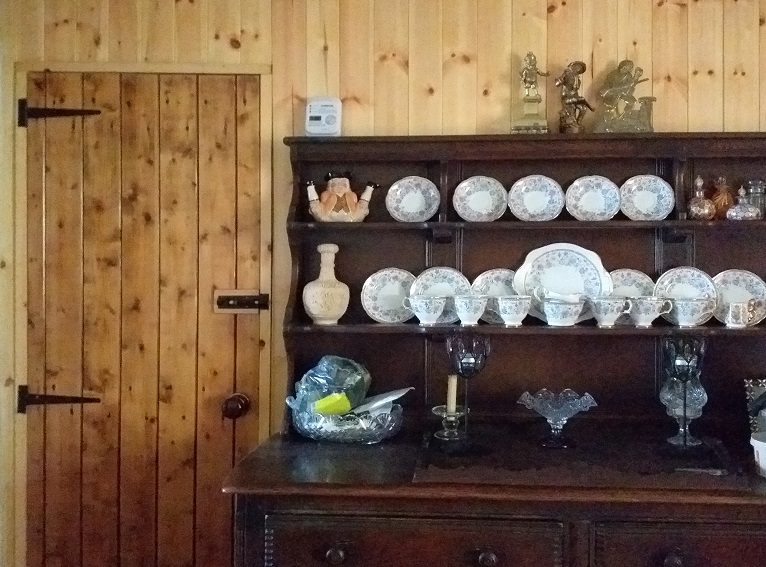
We built the cupboard in the corner for storage, but made it strong enough to help support an immersion tank situated in the room above.

We bought a reconditioned Rayburn for cooking, and heating the water. It wasn’t our best financial decision, but it served for the ten years it took before the new-build extension incorporated a modern kitchen. The kitchen units and worktops were found in a charity shop.
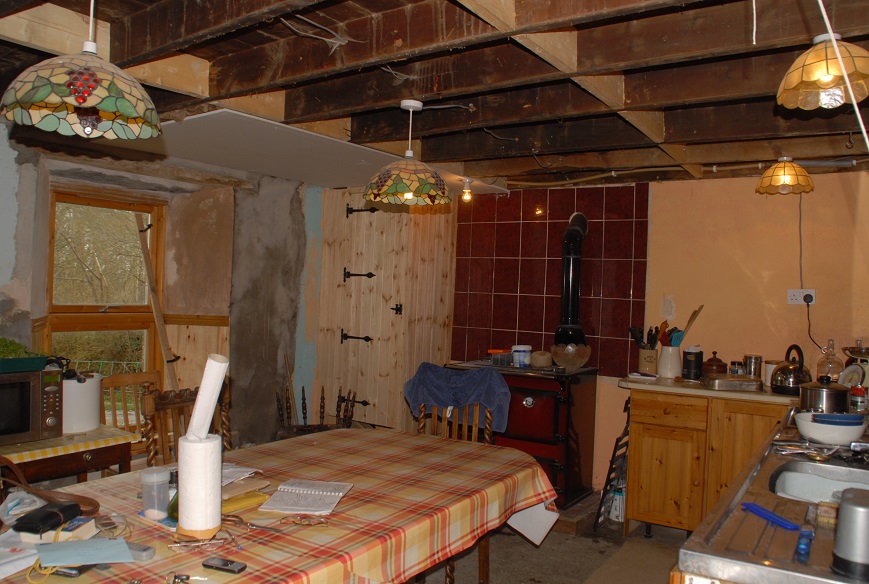
Insulation was then inserted into the ceiling cavity, and sealed in with plasterboard. The ceiling will eventually be clad with wood, but that expense will wait until some of the more urgent jobs have been completed.

This room is destined to be living area one day, with a wood-burning stove – once the extension has been completed.
…and a glimpse into the future, some ten years later. This is the modern kitchen created in the extension, but we still retained the secondhand kitchen units. Waste not want not as my grandparents would have said!
